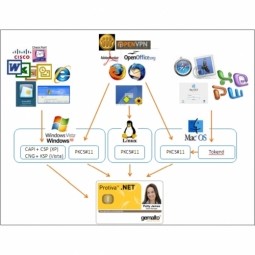Download PDF
Dentally: Revolutionizing Patient Communication in Dentistry Practices
Technology Category
- Networks & Connectivity - 5G
- Platform as a Service (PaaS) - Application Development Platforms
Applicable Industries
- Cement
- Life Sciences
Applicable Functions
- Logistics & Transportation
- Sales & Marketing
Use Cases
- Personnel Tracking & Monitoring
- Speech Recognition
Services
- System Integration
The Challenge
Dentistry practices operate on tight schedules, often leaving little time for patient care. Dentally, a company dedicated to improving patient experiences, envisioned a future where dentists have more time to treat patients. They aimed to build a user-friendly, intuitive portal that would empower dental practices to easily communicate with patients via voice and text. The challenge was to create a system that could streamline processes like appointment booking and reminders, clinical treatments, medical history records, and billing. This would ensure appointments run on time and patients are satisfied with their experience.
About The Customer
Dentally's customers are dental practices, both large chains and small family-run businesses. These practices rely on Dentally’s platform to improve their patients’ experiences. The software smooths the customer journey and minimizes the steps it takes to complete actions like appointment booking and reminders, clinical treatments, medical history records, and billing. This keeps appointments running on time and patients wanting to come back. As Dentally has grown, it has been able to serve more dentists across the U.K. and Europe.
The Solution
Dentally decided to build its text message solution with Twilio’s Programmable Messaging API. This allowed them to send patients timely appointment reminders and recall notices via text. Dentally also added automation to their system. Appointment reminders alert patients before visits, and patients reply to confirm. Inbound webhooks then seamlessly update the practice account within the Dentally system. Dentally also enabled two-way communication, reducing the average appointment no-show rate from 5% to 1.3%. Each practice’s account is assigned a local number, and Twilio’s Programmable Messaging API delivers reply message practices to their inbox, enabling the staff to hold back and forth conversations with patients. As Dentally grew, the Programmable Messaging allowed dentistry practices to send and receive 1.2 million text messages a month.
Operational Impact
Quantitative Benefit
Related Case Studies.

Case Study
System 800xA at Indian Cement Plants
Chettinad Cement recognized that further efficiencies could be achieved in its cement manufacturing process. It looked to investing in comprehensive operational and control technologies to manage and derive productivity and energy efficiency gains from the assets on Line 2, their second plant in India.

Case Study
Corporate Identity Solution Adds Convenience to Beckman Coulter
Beckman Coulter wanted to implement a single factor solution for physical and remote logical access to corporate network. Bechman Coulter's users were carrying smart card badges for doors, but also needed a one-time password token to access to our corporate network when they were not in the office. They wanted to simplify the process.

Case Study
Embracing Business Success in Real Time
· Increase control over growing Big Data to improve business decisions · Manage data for 28,000 biotechnology stockkeeping units in the fields of microbiology, molecular biology, animal cell cultures, plant tissue cultures, and lab ware for laboratory chemicals · Accelerate report generation and analysis with real-time data

Case Study
Digital Transformation of Atlanta Grout & Tile: An IoT Case Study
Atlanta Grout & Tile, a Tile, Stone & Grout restoration company based in Woodstock, Georgia, was facing challenges with its traditional business model. Despite steady growth over the years, the company was falling behind the web revolution and missing out on the opportunity to tap into a new consumer base. They were using independent software from different vendors for each of their department information and workforce management. This resulted in a lot of manual work on excel and the need to export/import data between different systems. This not only increased overhead costs but also slowed down their response to clients. The company also had to prepare numerous reports manually and lacked access to customer trends for effective business decision-making.

Case Study
Revolutionizing Construction Equipment Rental: A Case Study on ProsRent and ENO8
ProsRent, a startup that won the 'Best Financial Opportunity' and 'Best Pitch' at CodeLaunch 2016, aimed to revolutionize the way construction professionals source and rent heavy equipment. In the construction industry, project managers and contractors typically rent heavy equipment from supply companies. However, predicting inventory can be challenging, and finding the required equipment at the right time and place can be a hassle. If the preferred vendor doesn't have the required equipment, it results in wasted time and money in searching for it, often leading to higher costs due to non-preferred rates and increased delivery costs if the vendor is located far from the job site. Suppliers, on the other hand, desired access to a wider base of trusted renters that they didn't have to vet themselves and wanted to offer dynamic rental pricing based on demand and availability in their market. ProsRent's challenge was to produce a minimum viable product that was fast and first to market but also strong enough to engender loyalty and repeat business from the target market.






